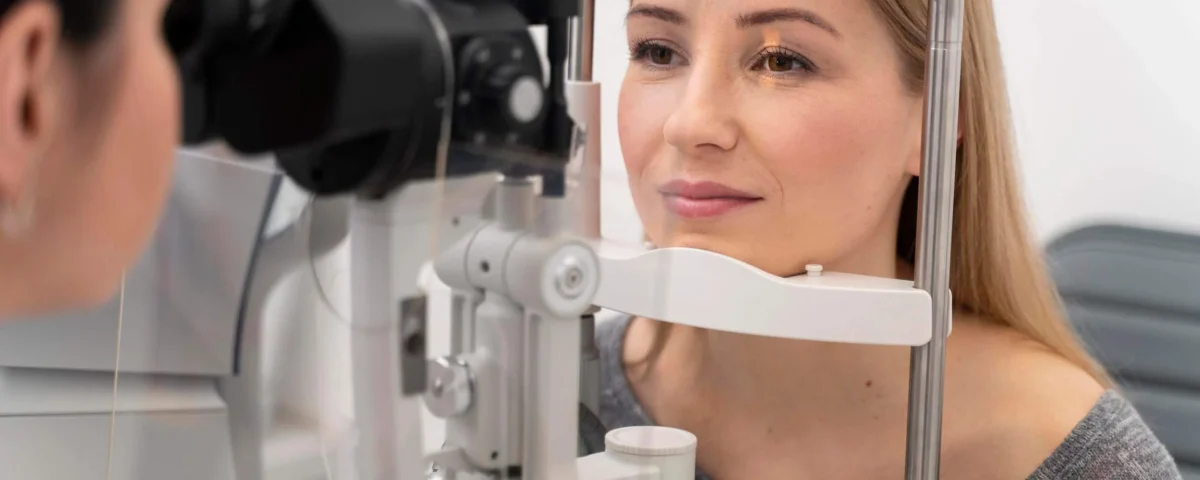
The Role of an Orthopedic Surgeon in Healing Bone Fractures
October 1, 2025
Utilizing Accelerated TMS for Chronic Pain and Depression Relief
October 1, 2025Laser-assisted in situ keratomileusis, commonly referred to as LASIK, is a refractive eye surgery designed to correct common vision issues. This is a common elective procedure for individuals seeking to reduce or eliminate their dependence on glasses or contact lenses. This surgery uses a highly specialized laser to reshape the cornea, which is the clear front part of the eye. Modifying the cornea’s shape can enhance how light is focused onto the retina, improving vision. Here’s more information on LASIK surgery and what its risks and benefits are:
How Does LASIK Eye Surgery Work?
LASIK surgery is a precise procedure performed by an ophthalmologist. It involves creating a thin, hinged flap in the cornea. This flap is then lifted to allow a laser to access and reshape the underlying corneal tissue. LASIK is designed for individuals with specific refractive errors. Refractive errors occur when the shape of the eye prevents light from focusing correctly on the retina.
Who Is a Good Candidate?
People recommended for LASIK typically have nearsightedness (myopia), farsightedness (hyperopia), or astigmatism. Good candidates are generally over 18 years old, have had a stable vision prescription for at least one year, and have healthy eyes free from conditions like:
- Severe Dry Eye
- Glaucoma
- Cataracts
A thorough evaluation by an eye care professional is necessary to determine if an individual is a suitable candidate.
How Does this Surgery Correct Vision?
The primary goal of LASIK is to alter the curvature of the cornea. For nearsightedness, the laser flattens the cornea to correct for an eye that is too long. For farsightedness, the laser makes the cornea steeper to compensate for an eye that is too short. In cases of astigmatism, where the cornea is irregularly shaped, the laser smooths it into a more normal shape. By precisely removing microscopic amounts of tissue, the laser reshapes the cornea, allowing light to focus properly on the retina and produce clear vision.
What Are the Benefits of LASIK?
The primary benefit of this eye surgery is a significant improvement in vision, often resulting in 20/20 vision or better. This can lead to a reduced need for corrective eyewear, offering greater freedom and convenience in daily activities, sports, and professional life. The procedure itself is quick, typically lasting less than 30 minutes for both eyes, and many patients report a noticeable improvement in their vision within 24 to 48 hours. The results are permanent, as the corneal tissue removed does not regenerate.
What Are the Side-Effects of LASIK?
While LASIK is a widely performed procedure with a high rate of patient satisfaction, it is a surgical procedure and carries potential risks and side effects. Most side effects are temporary and resolve within a few weeks or months. Common post-operative experiences include dry eyes, which may require the use of lubricating drops, and visual disturbances, including glares, halos around lights, or starbursts, particularly at night.
Although rare, more serious complications may occur, like:
- Under-correction or Over-correction of the Refractive Error
- Development of Astigmatism
- Flap-related Complications (like Infection or Inflammation)
- Persistent Dry Eye Symptoms
Learn More About LASIK Surgery
Deciding to undergo LASIK surgery is a personal and medical decision. The best way to determine your candidacy is to schedule a comprehensive consultation with a qualified ophthalmologist. A professional can perform a detailed eye examination, assess your overall health, and discuss your specific visual needs and lifestyle to help you make an informed choice.




